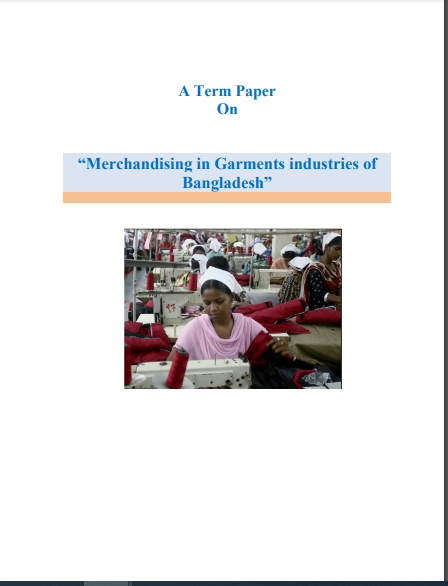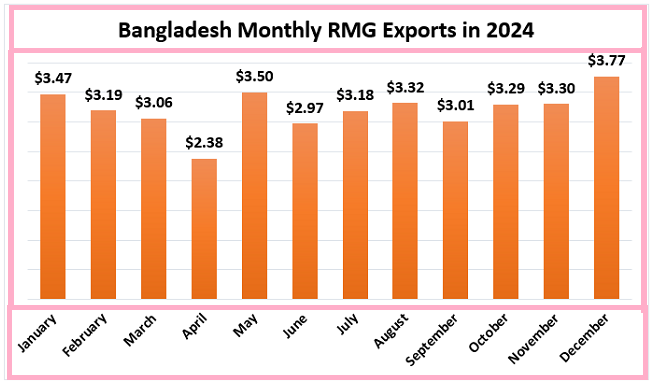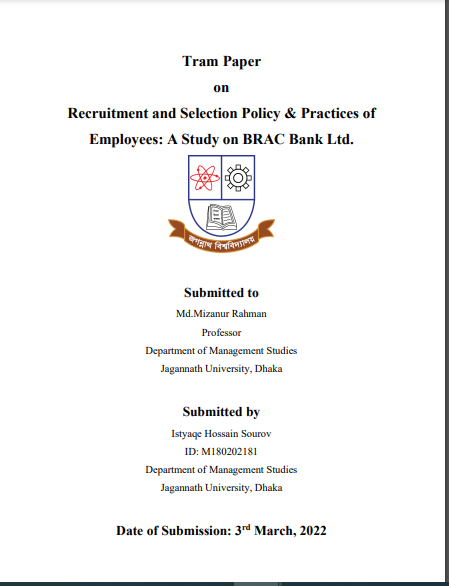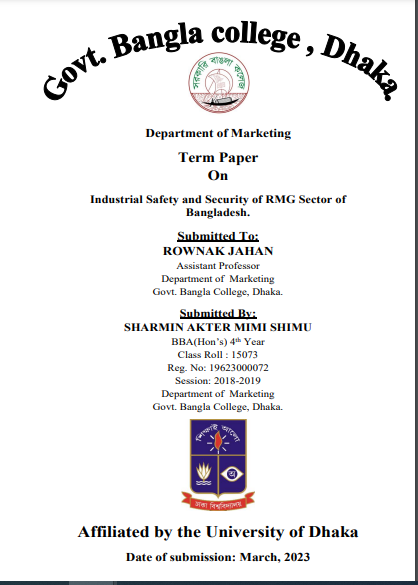
Merchandising in Garments industries of Bangladesh. The Readymade Garments (RMG) sector has a greater potential than any other sector to contribute to the reduction of poverty in Bangladesh. The sector rapidly became important in terms of employment, foreign exchange earnings and its contribution to Gross Domestic Product (GDP).
Despite the phenomenal success of the Bangladesh’s readymade garments (RMG) sector as a global leader in textile manufacturing, poor working conditions in factories and a lack of adherence to social compliance standards remain significant concerns. As a result, there is a rising fear in Bangladesh that the readymade garments sector may face a decline in demand.
This prime challenge has not only impacted the stability of the sector but it also raised alarms about its going to be long-term sustainability. There is improving apprehension that if these problems are not addressed effectively, the readymade garments sector may face a decline in global demand.
| Report Title : | Merchandising in Garments industries of Bangladesh. |
| University Name : | Tejgaon College |
| Submitted To : | Md. Surujjaman |
| Submitted By : | Hasiba Mansura |
| Total Page : | 41 |
Buyers and international stakeholders are increasingly prioritizing ethical sourcing and compliance with labor and safety standards, and Bangladesh risks losing its competitive edge if it fails to meet these expectations. Social compliance in the RMG industry is a key requirement for most of the world’s garments buyers. It ensures labor rights, labor standards, fair labor practices and a Code of Conduct.

Both external and internal factors contributed to the phenomenal growth of RMG sector. One external factor was the application of the GATT-approved Multifiber Arrangement (MFA) which accelerated international relocation of garment production.
Under MFA, large importers of RMG like USA and Canada imposed quota restrictions, which limited export of apparels from countries like Hong Kong, South Korea, Singapore, Taiwan, Thailand, Malaysia, Indonesia, Sri Lanka and India to USA and Canada. On the other hand, application of MFA worked as a blessing for Bangladesh.
By 1985, Bangladesh emerged as a strong apparel supplier and became a powerful competitor for traditional suppliers in the US, Canadian and European markets. Since 1986,
Bangladesh has been increasingly subjected to quota restrictions by USA and Canada. RMG industry suffered setback in a number of countries in the 1980s. Some countries had internal problems, for example, Sri Lanka; and some other countries of Southeast Asia experienced rapid increase in labor cost.
Outline of the Report
Chapter One: Introduction, Objectives of The Study, Methodology, Motive of the Research, Limitation.
Chapter Two: Data Collection, Method of Data Collection, Data Processing and Analysis, Culture and Government structure, Natural Resources, Agriculture, Economy, Rules and Regulations.
Chapter Three: The Development of the Garment Industry in Bangladesh.
Chapter Four: Graphs of the overall preview.
Chapter Five: Summary of the Study, Recommendations, Conclusion, References.
Objectives of the Study:
The exercise was designed around the following objectives:
- To prepare and guide selected garment exporters in becoming competitive through Garments Accessories activities:
Equip selected garment exporters with the knowledge and tools necessary to enhance their competitiveness by optimizing activities related to garment accessories. This includes understanding market trends, adopting innovative practices, and aligning with global standards in accessories production and utilization.
- To develop in-depth understanding, and application of OPERATION in selected companies:
Facilitate the development of a comprehensive understanding of operational processes within selected companies, focusing on improving workflow, resource management, and strategic implementation to boost overall effectiveness.
- To identify and encourage the implementation of Best Practices so as to minimize costs, improve efficiencies and productivity:
Highlight and promote the adoption of proven best practices across the sector to minimize operational costs, enhance efficiencies, and increase productivity. This involves identifying key areas of improvement and providing actionable recommendations.
- To collect information on best practices/snapshot in seven fields of the selected companies under the survey and to develop comparative data amongst the industries:
Gather detailed information on best practices within seven critical fields of the selected companies surveyed. Use this data to develop comparative insights and benchmarks that enable industries to assess their performance relative to peers and identify opportunities for improvement.
Conclusion:
On this backdrop, a study on the working conditions and environment in the garments industry of Bangladesh is imperative. The analyses of working conditions in relation to labor rights and labor standards have been the subject matter of many discussions and studies.
A number of issues that especially concern and effect employment, fair labor practices, global labor standards, labor rights, Code of Conducts, Decent work, international communities and other stakeholder roles, buyer demand,
Weak law enforcement and labor unrest (cause of law wages, working hours, overtime, health and safety, job security, the right to form trade unions and environment security), are identified and discussed in this research.







